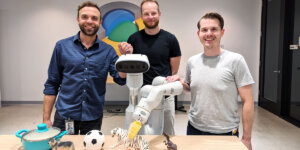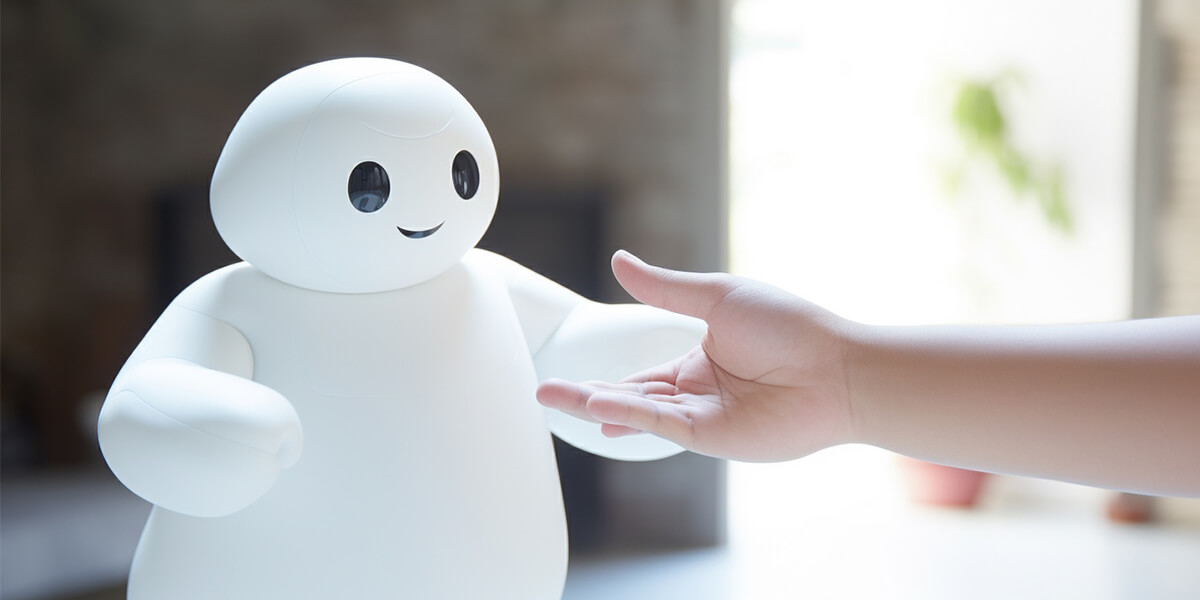
Origami-inspired strain sensors could change the way we interact with soft robots
Hollywood is a go-to source of inspiration for roboticists. The astonishingly lifelike movements of animated characters in movies such as “Avatar” and “Lord of the Rings” are produced using the technique of motion capture – in which reflective markers are attached to an actor, captured by cameras and translated into motion data that can be read by animation software.
In the field of soft robotics, a comparable method has been used to track the deformation – or changes in shape – of soft components such as the muscles of a robotic arm. Cameras can gather the data that enables researchers to measure stretchability and recovery, crucial information for predicting and therefore controlling the motion of the robot.
Here’s the catch: this process rarely works outside the lab. If a robot is navigating the ocean, operating up in space, or enclosed within the human body, a set-up of multiple cameras isn’t always practical.
That’s why Hangbo Zhao, who holds dual appointments as assistant professor in the Department of Aerospace and Mechanical Engineering and the Alfred E. Mann Department of Biomedical Engineering, decided to test an alternative approach.
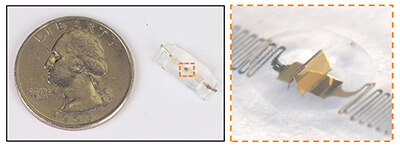
Scale image of the strain sensor with origami-inspired electrode design
Prompted by conversations with his colleagues in soft robotics, Zhao and his research group have developed a design for a new sensor using 3D electrodes inspired by the folding patterns used in origami, able measure a strain range of up to three times higher than a typical sensor.
The sensors can be attached to soft bodies in motion – anything from the mechanical tendons of prosthetic leg, to the pulsating matter of human internal organs – for the purpose of tracking shape-change and proper functioning, no cameras required.
The resulting paper, “High-Stretchability and Low-Hysteresis Strain Sensors Using Origami-Inspired 3D Mesostructures,” is published in the leading journal Science Advances.
Why origami is a solution for stretchiness
“To develop the new sensor, we leveraged our previous work in the design and manufacture of small-scale 3D structures that apply principles of origami,” Zhao explained. “This allows the sensors to be used repeatedly, and to give precise readings even when measuring large and dynamic deformations of soft bodies.”
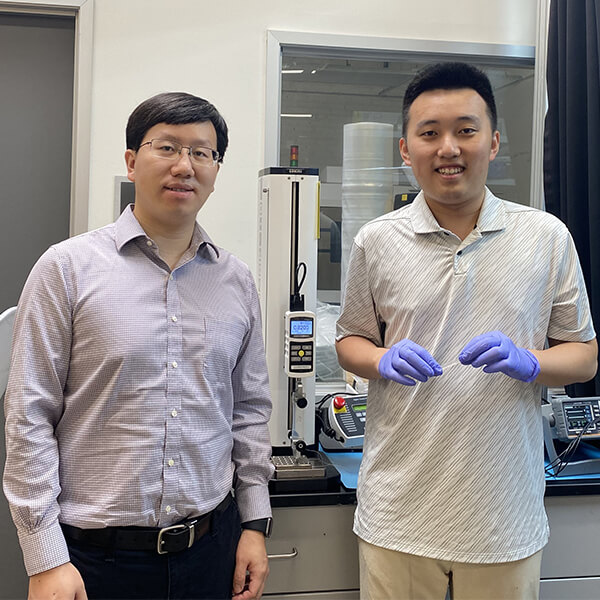
Professor Hangbo Zhao and the paper’s first author, Xinghao Huang, PhD candidate in Mechanical Engineering
Existing stretchable strain sensors typically use soft materials like rubber – but this type of material can undergo irreversible changes in the material properties through repeated use, producing unreliable metrics when it comes to deformation detection.
But what if the material of the sensor wasn’t inherently soft or stretchy? Instead, the 3D structure of the electrodes would convert stretch and release to a process of unfolding and folding.
Zhao’s ingenious solution for the electrode-based sensor can be demonstrated with a flat piece of paper. Pull either side – does it get larger? No? So, not stretchy.
Now fold the paper in half. Open it again. The shape of the folded paper changes, but the material itself hasn’t transformed in substance. In other words, better than stretchy.
As the electrodes unfold, the strength of the electrical field is captured. A model developed by the team then converts this reading into a measurement of the deformation. This approach is ideal for responding to large deformations that existing sensors aren’t capable of identifying accurately; through the art of folding, you can achieve reversible jumps in dimensions without causing a change in the material.
Strain, speed and hysteresis
“We integrate the 3D origami-inspired electrodes with a soft, stretchable substrate through covalent bonding,” Zhao explained. “This unique combination allows us to measure a very large deformation, as much as 200 percent strain, with an ultra-low hysteresis of around 1.2 percent. There’s also a very fast response, within 22 milliseconds.”
The high performing design of the sensors makes them a “triple threat” of sorts: capable of rapidly measuring high deformation with maximum precision.
Said Zhao: “Our sensors are the best in achieving all three sensing characteristics. They also have a few other attractive features. The sensing area is very small, just a few square millimeters, which allows us to measure deformation locally. Plus, they’re capable of detecting strain from different directions. Because the sensors are soft and small, they can easily adhere to a target object – acting in the style of a sticker or a bandage.”
The next stretch
Because the sensors can accurately measure large, complex and fast-moving deformations, there are countless opportunities for practical application in wearable electronics, prosthetics and robotics.
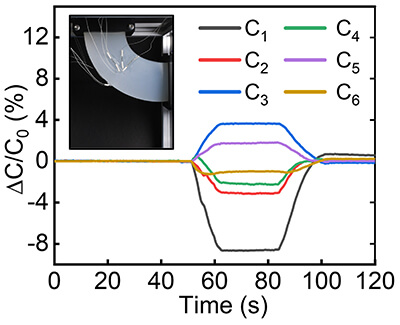
Demonstration of using the strain sensors for sensing soft robot motion
While the design of the new sensor was originally intended for controlling soft robotics – from delicate robotic grippers to snake-like surveillance devices – they are also ideally suited for innovation in biomedicine.
“We can apply these sensors as wearable or implantable biomedical devices for healthcare monitoring,” Zhao explained. “For example, tracking the movement and flexibility of our skin or our joints. There’s also high demand for developing implantable sensors that can continuously monitor the functional status of internal organs that undergo cyclic expansion and contraction.”
As it happens, “squash and stretch” is the first key principles of animation in the go-to Disney handbook, “The Illusion of Life.” So don’t be surprised if you see Zhao’s technique feeding back into new innovations in the movie industry. Inspiration is cyclical – so it’s not too much of a stretch to imagine.
Published on August 29th, 2023
Last updated on May 2nd, 2025








